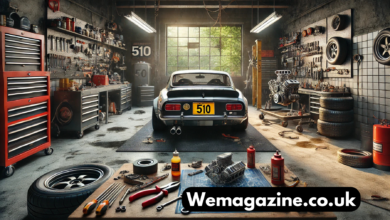What Do Dolphins Eat? A Deep Dive into Their Diet

Dolphins are some of the ocean’s most fascinating creatures, known for their intelligence, playful nature, and remarkable adaptability. But have you ever wondered what fuels these energetic animals? In this article, we’ll explore what dolphins eat, how their diet varies depending on species and habitat, and the unique hunting techniques they use to secure their meals. Let’s dive right in!
The Basics of a Dolphin’s Diet
Dolphins are carnivores, meaning their diet consists exclusively of meat. However, what they eat can vary significantly depending on their species, size, and environment. Typically, a dolphin’s diet includes a variety of fish and other marine creatures, such as squid and crustaceans.
Most dolphins consume between 4% to 6% of their body weight in food each day. This means a dolphin weighing 300 pounds could eat around 12 to 18 pounds of fish daily. That’s a lot of seafood! But why do dolphins eat so much? It’s simple: their active lifestyle and warm-blooded nature require a lot of energy to maintain their body temperature and perform daily activities like swimming, hunting, and socializing.
Fish: The Main Course
For many dolphin species, fish is the primary component of their diet. Common fish species consumed by dolphins include mackerel, herring, cod, and sardines. These fish are not only abundant in the oceans but also packed with the nutrients dolphins need.
Dolphins are selective about the type of fish they eat. They tend to prefer fish with a higher fat content, as it provides more energy. However, they’re not picky to the point of starvation—they’ll adapt their diet based on what’s available in their habitat. Coastal dolphins, for example, may have access to different fish species compared to those living in open oceans.
Squid and Crustaceans: Tasty Snacks
In addition to fish, many dolphins enjoy eating squid and crustaceans. These creatures are particularly popular among species like the common dolphin and Risso’s dolphin, which inhabit deeper waters where squid is more prevalent.
Squid are a great source of protein and are relatively easy for dolphins to catch, especially in large groups. Some dolphins even specialize in hunting these slippery creatures at night when squid are more active and easier to spot.
Crustaceans, including shrimp and crabs, also make occasional appearances on a dolphin’s menu. These are more common in the diets of coastal dolphins that have easier access to shallow-water species.
How Dolphins Hunt for Food
Dolphins are not just fast swimmers; they’re also incredibly strategic hunters. Their hunting methods vary depending on the type of prey they’re targeting and their group dynamics.
Echolocation: Nature’s Sonar
One of the most impressive tools in a dolphin’s hunting arsenal is echolocation. Dolphins emit a series of clicks and listen to the echoes that bounce back from objects in the water. This helps them locate and identify prey, even in murky or dark waters.
Echolocation is so precise that dolphins can determine the size, shape, and speed of their prey. This allows them to target specific fish or squid with pinpoint accuracy, making their hunting efforts highly efficient.
Cooperative Hunting
Dolphins are social animals, and they often hunt in groups called pods. This teamwork allows them to corral schools of fish into tight groups, making it easier to catch them. Some species, like the bottlenose dolphin, have been observed using a technique called “fish herding.”
In fish herding, one dolphin swims in a circle around a school of fish, creating a barrier that the fish are reluctant to cross. The other dolphins then take turns swimming through the trapped fish to feed. This collaborative hunting strategy ensures that everyone in the pod gets a fair share of the meal.
Strand Feeding and Mud Ring Feeding
In some coastal areas, dolphins use unique hunting techniques like strand feeding and mud ring feeding. During strand feeding, dolphins chase fish onto sandy shores or mudflats, temporarily beaching themselves to catch their prey. They then wriggle back into the water to avoid getting stranded.
Mud ring feeding is another fascinating behavior observed in bottlenose dolphins. They use their tails to create circular clouds of mud in shallow waters, trapping fish inside. Confused and disoriented, the fish leap out of the water and into the waiting mouths of the dolphins.
How Diet Varies Among Dolphin Species
While most dolphins have similar dietary staples, there are some notable differences based on species and habitat. Let’s look at a few examples:
Bottlenose Dolphins
Bottlenose dolphins are perhaps the most well-known species and have a varied diet. They eat a wide range of fish, squid, and crustaceans, adapting their diet based on what’s available in their environment. Their flexible diet makes them highly adaptable and capable of thriving in diverse habitats.
Orcas (Killer Whales)
Orcas, technically the largest species of dolphin, have a more specialized diet depending on their population. Some orcas, known as resident orcas, primarily eat fish, especially salmon. Others, called transient orcas, hunt marine mammals like seals, sea lions, and even other dolphins.
Spinner Dolphins
Spinner dolphins primarily feed on small fish and squid, often hunting at night when their prey rises closer to the ocean’s surface. These dolphins are known for their acrobatic spins, which they perform while feeding or socializing.
The Importance of a Balanced Diet
A balanced diet is crucial for dolphins to maintain their health, energy levels, and reproductive success. Like humans, dolphins require a mix of proteins, fats, and other nutrients to stay healthy. Their diet directly impacts their ability to hunt, evade predators, and care for their young.
In captivity, dolphins are typically fed a carefully controlled diet of fish to ensure they receive all the necessary nutrients. However, this controlled environment differs significantly from the varied and dynamic diet they experience in the wild.
Final Thoughts
Understanding what dolphins eat provides valuable insights into their behavior, health, and ecological role. These intelligent creatures have adapted remarkable strategies to hunt and thrive in diverse environments. From fish and squid to innovative hunting techniques, dolphins never fail to impress with their resourcefulness.
If you ever get a chance to observe dolphins in the wild, take a moment to appreciate the complexity of their diet and the incredible effort they put into securing their meals. It’s a fascinating world beneath the waves, and dolphins are among its most skilled hunters.




